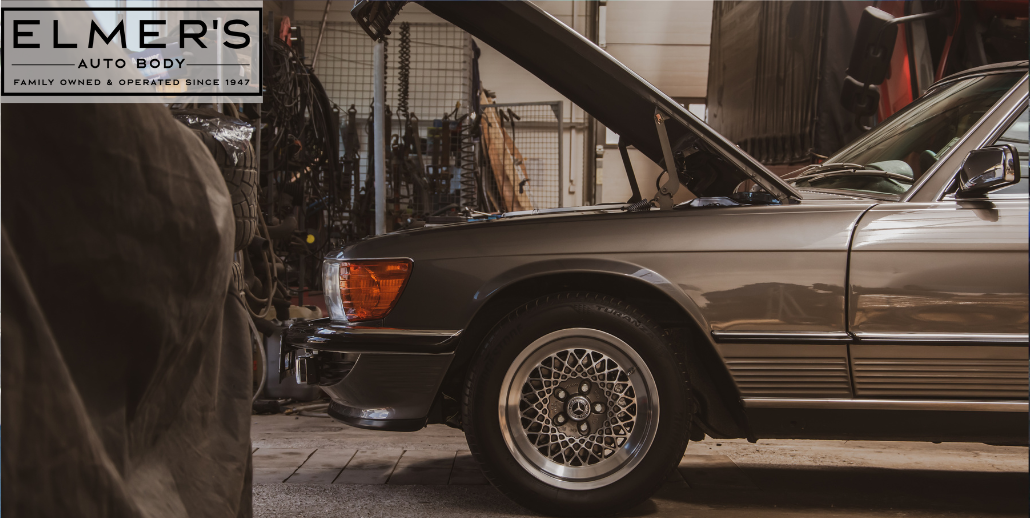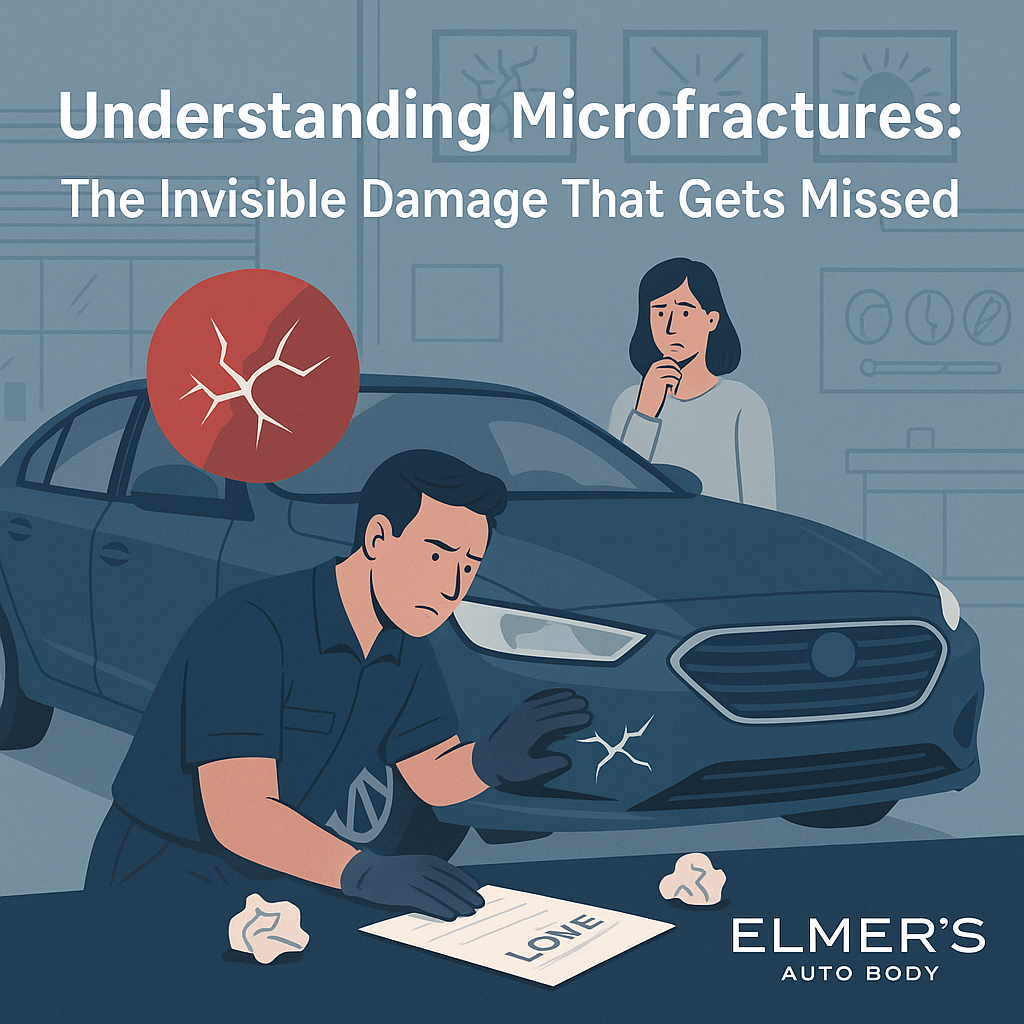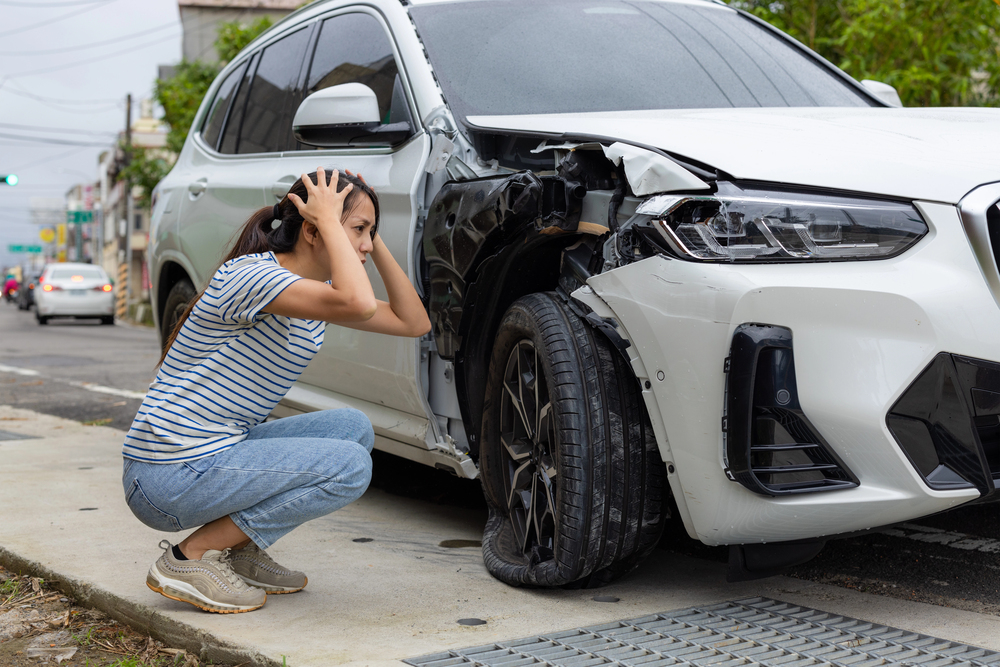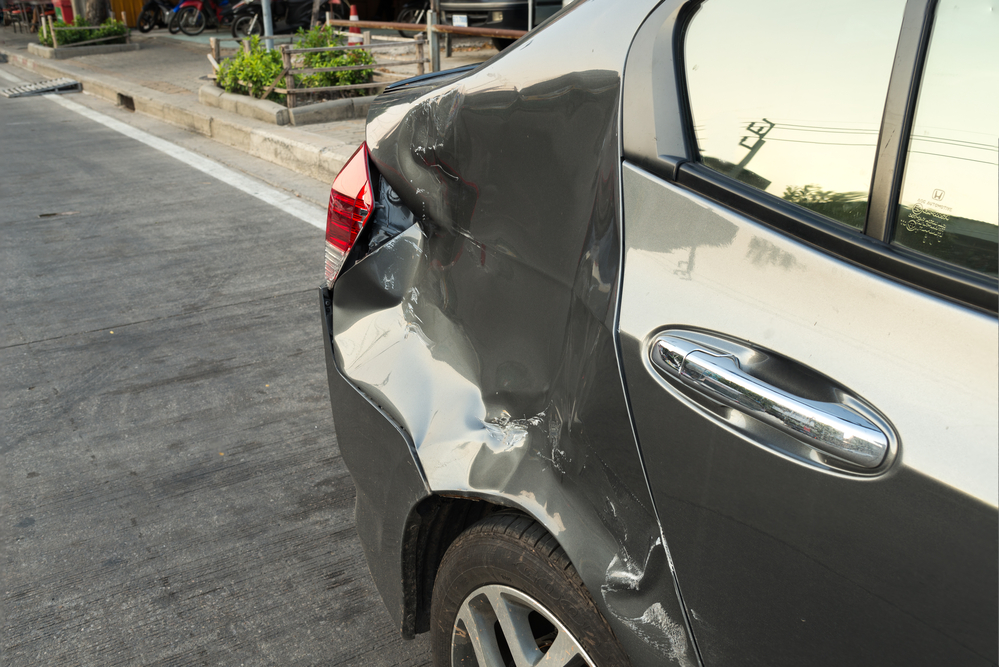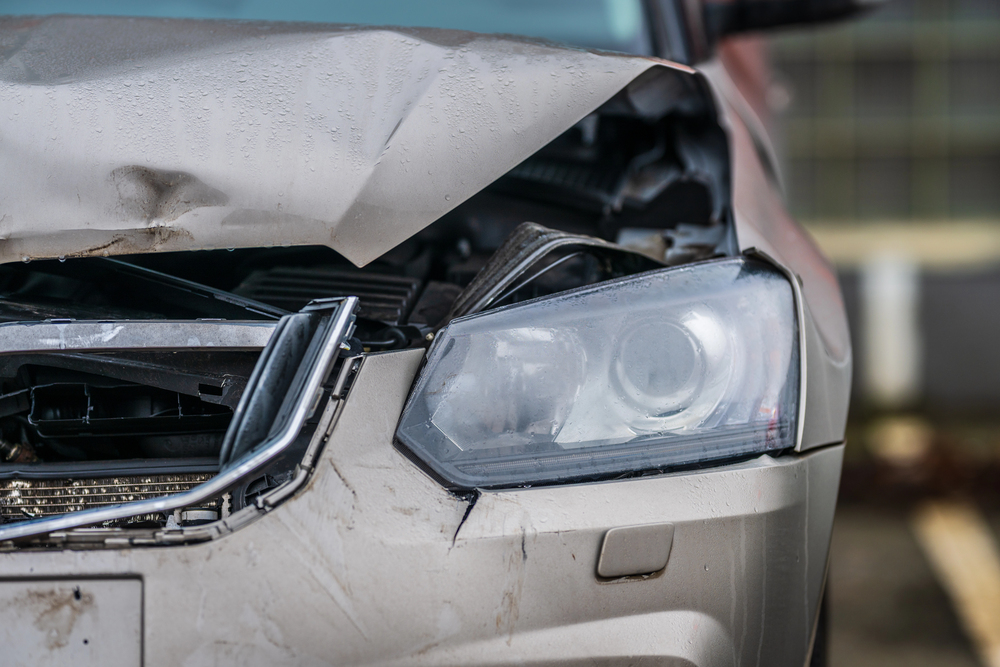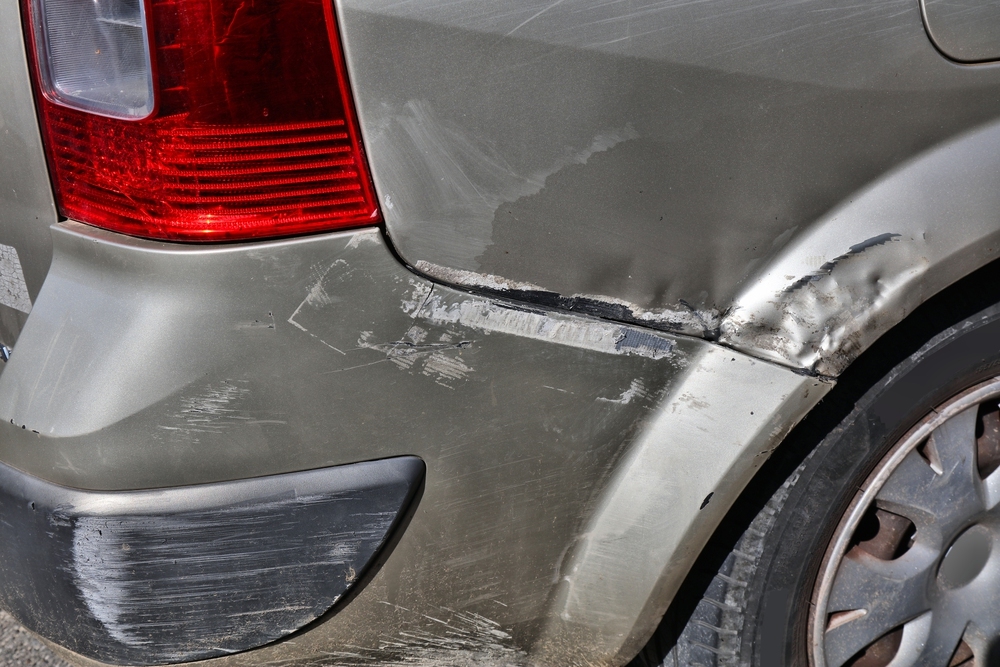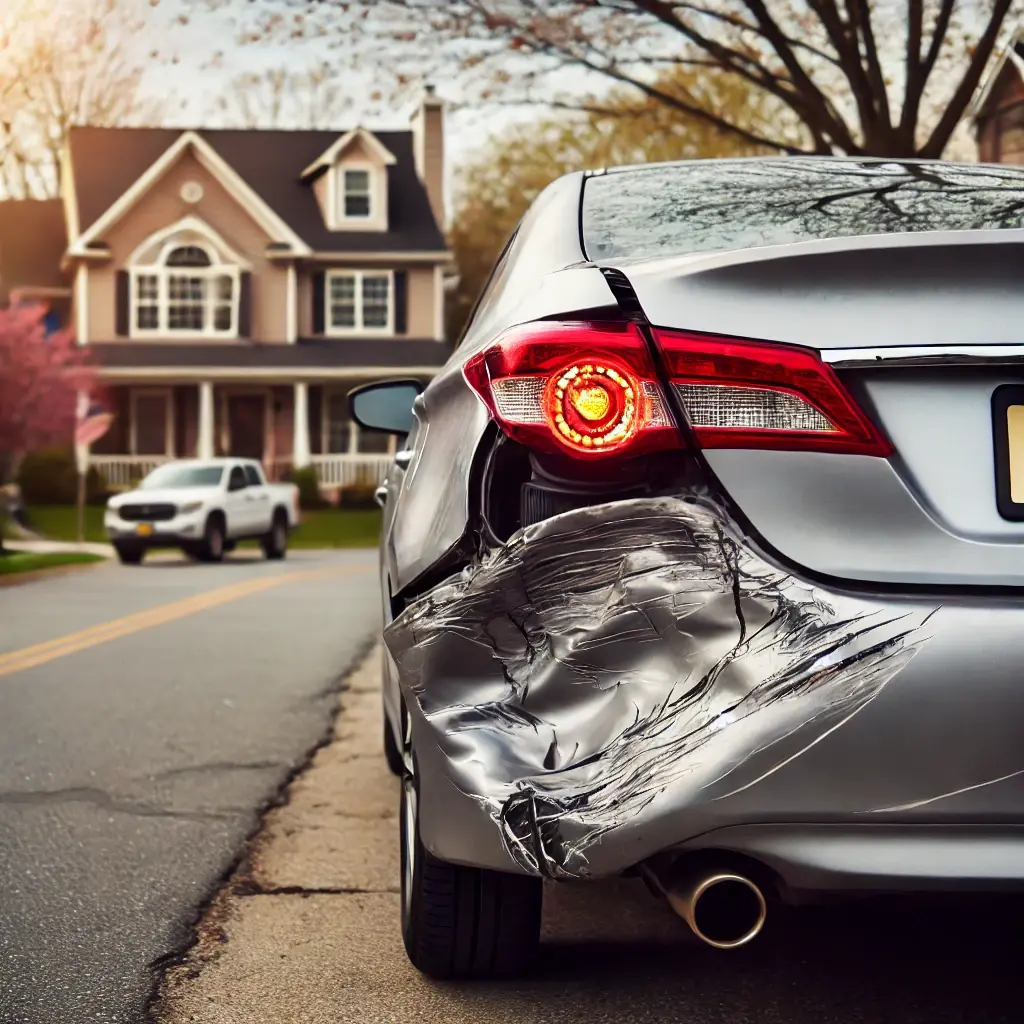After an accident, you want to have your car back in one piece. Taking your vehicle to an auto body repair shop should bring about some peace of mind. Unfortunately, not every collision repair shop is equipped to do repairs the right way. If your car wasn’t repaired correctly the first time, you may be left with ongoing issues that deteriorate the safety and performance of your vehicle. Here are the 6 top signs your car wasn’t repaired right, as well as what to do about it.
Key Takeaways
- Uneven paint or dull, mismatched colors often signal rushed prep or poor paint-matching.
- Strange noises after repair can indicate loose fasteners, poor alignment, or unfinished work.
- Steering pull or unstable handling suggests missed alignment or suspension corrections.
- Persistent warning lights usually point to skipped diagnostics or improper ADAS recalibration.
- Panel gaps, misaligned doors, or unresponsive safety features are strong signs of incomplete repairs.
Uneven Paint or Mismatched Colors
Quality repairs should leave your car looking like it was never damaged. Therefore, if you notice sections that look lighter or darker or duller, something is wrong. Usually, this is an indication that the shop didn’t use the right paint-matching techniques or equipment. You may even see overspray, bubbling, or rough textures, all of which are signs of poor application. While this may seem like a cosmetic problem, it can also reveal that the entire repair process was rushed.
Strange Noises When Driving
When your car makes unusual sounds after a repair, it’s a sign something isn’t right. Clunks, squeaks, or rattling noises may come from improperly tightened bolts, missing clips, or parts that weren’t correctly aligned during reassembly. Even subtle noises should never be ignored, as they often point to underlying issues such as suspension misalignment or loose structural components. Left unaddressed, these problems can worsen over time and compromise your vehicle’s safety.
Steering Feels Off
A vehicle feeling “off” after repairs is never a good sign. If you leave the auto body repair shop and notice that your car is pulling to one side or gets wobbly at higher speeds, something is wrong. Your vehicle may be misaligned or the suspension could be improperly installed. Poor steering is dangerous, since the damages causing the issue can stem from frame or structural components. In an emergency, even the slightest misalignment can change how your car responds.
Warning Lights Stay On
Modern vehicles rely on dozens of sensors that monitor everything from airbag readiness to ADAS systems. If you notice a check engine light, airbag warning, or other dashboard alerts that weren’t present before, it could mean your repair shop failed to reset or recalibrate the affected systems. Ignoring these warning lights not only puts your safety at risk but can also prevent critical features, such as airbags or braking assistance, from working properly when you need them most.
Panel Gaps and Uneven Fit
Another sign your car wasn’t repaired right? Body panels, doors, and bumpers that aren’t consistently spaced. Large or uneven gaps, crooked panels, and doors and trunks that don’t easily close point to poor repairs. Again, this is a problem that is more than cosmetic. Panels, doors, and bumpers that have gaps or fit unevenly are a sign that you have frame damage, which weakens the performance and safety of your vehicle.
Safety Features Unresponsive
Modern vehicles are equipped with Advanced Driver Assistance Systems (ADAS), which includes lane departure warnings, forward collision alerts, and adaptive cruise control. If these features don’t work the way they did before the accident, it means the shop didn’t recalibrate the systems. Sensors and cameras may also be out of place.
You want these systems to be reliable, since they make driving safer. However, proper ADAS calibration requires specialized equipment and training, and it’s something every collision repair should include before returning your car to the road.
Pro Tip
Do a focused test drive within 24–48 hours of pickup: straight-line tracking, gentle/brisk braking, low-speed turns, highway speeds, and ADAS checks (cruise, lane assist, parking sensors).
If anything feels off, stop driving and document with photos/videos. Ask the shop for proof of procedures—alignment printout, pre/post scan reports, and ADAS calibration certificates.
What to Do if You Suspect That Your Car Wasn’t Repaired Right
If you notice any of the 6 signs, there are steps you can take to get the issues repaired for real. Do the following:
- Document the problems. Take photos, videos, and notes of anything unusual.
- Contact the repair shop. Reputable shops should address your concerns and offer to fix the problem.
- Seek a second opinion. Another certified collision repair center, like Elmer’s Auto Body, can re-inspect your vehicle and verify whether the work was completed properly.
- Don’t wait. Driving a car that wasn’t repaired right can put your safety at risk. Get the issue checked out as soon as possible.
FAQs
How soon should I bring the car back if something seems wrong?
Immediately. New noises, pulling, warning lights, or ADAS issues should be checked right away to protect safety and prevent additional damage.
Can a shop fix poor repairs done elsewhere?
Yes. A certified collision center can perform a post-repair inspection, document deficiencies, and create a corrective repair plan.
Do I have to pay again if the original shop made mistakes?
Many shops warranty their work—start there. If you switch shops, your insurer may cover corrective repairs if they’re related to the original claim and properly documented.
What proof should I request after collision repairs?
Alignment specs, pre/post diagnostic scan reports, ADAS calibration results, parts invoices (OEM vs. aftermarket), and a detailed final bill of materials/labor.
Is it safe to drive if warning lights are on after repair?
Not recommended. Airbag, ABS, or ADAS alerts can signal critical safety functions are offline. Get the vehicle scanned and inspected before continued use.
Will Elmer’s Auto Body provide a second opinion?
Absolutely. We offer post-repair inspections for South Jersey drivers and can supply written findings to support warranty claims or insurer reviews.
Car Wasn’t Repaired Right? Contact a Highly-Rated Auto Body Repair Shop in South Jersey Today
If you took your car to get repaired and there are signs that the job wasn’t done correctly, don’t stand for it. Uneven paint, gaps between panels, or sounds while driving are never acceptable. It’s also not safe. At Elmer’s Auto Body, we don’t just “patch up” vehicles—we restore them to factory standards. With advanced technology, certified technicians, and decades of experience serving South Jersey drivers, we ensure every repair is done the right way the first time. From structural straightening to ADAS recalibration, your safety is always the top priority.
If you need poor repairs from another auto body shop repaired, give Elmer’s Auto Body a call. We have three convenient locations in South Jersey. Fill out the contact form to request an appointment to have your vehicle evaluated.

